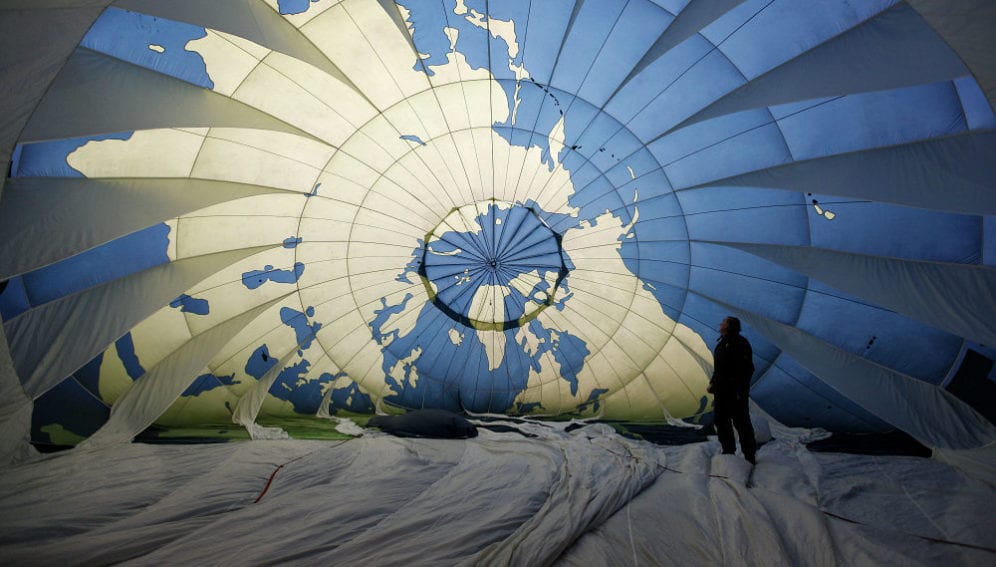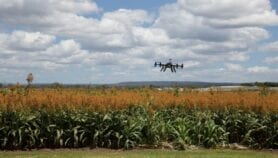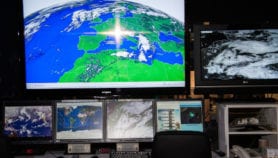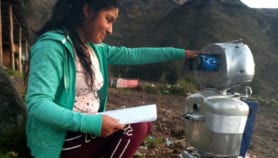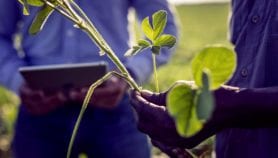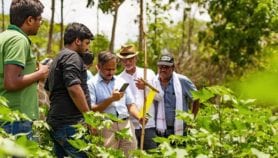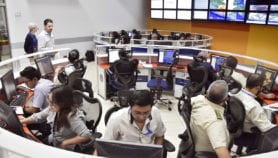By: Gareth Willmer
Send to a friend
The details you provide on this page will not be used to send unsolicited email, and will not be sold to a 3rd party. See privacy policy.
There’s no shortage of ideas for getting internet to people in developing countries, specially remoter areas. But will they work? Gareth Willmer investigates.
New technologies using balloons, drones and unusual satellites have been tested in recent years with the aim of improving global access to high-speed internet. The hope is that some of these innovative technologies could help narrow and eventually eliminate the global digital divide.
Several billion people around the world — some estimates say around three billion — are still without internet infrastructure, many of them in developing countries. Often they are in areas remote from fibre-optic cables or too poor for expensive satellite access.
While the development of new technologies has been welcomed and major global companies such as Facebook, Google and Microsoft have made moves to invest in them, the dream of internet access for all, in particular reaching the so-called ‘last mile’ of remote communities may still be some way off.
The hard truth is that communities are different so a ‘one size fits all’ approach is unlikely to be successful. In addition, some of the promising technologies may require regulatory changes which could be a lengthy process.
Carried by cable
Fibre-optic cable is the backbone of much of the West’s internet infrastructure, but for some regions the technology is currently too costly and difficult to deploy in more remote areas, or areas where people have more limited financial resources.
Frank McCosker, general manager of affordable access and smart financing at the Microsoft 4Afrika Initiative, believes fibre is not a panacea for bridging the global digital divide.
“You’d probably only get to about (another) 2.1 billion people in an affordable way,” McCosker tells SciDev.Net. ”There’s still this question of how you deal with the next five to six billion.”
For example, many Pacific island communities are unlikely to be well served by fibre, says Christian Patouraux, CEO of Kacific Broadband Satellites, which has offices in Australia and Asia, is planning to launch a new type of low-cost, high-throughput satellite for broadband in early 2017.
“The Pacific will never be entirely covered by [fibre optic] technology,” says Patouraux, adding that many Pacific island communities simply cannot absorb the enormous cost.
Balloon delivery
Many organisations recognise that bringing internet access to geographically remote or otherwise isolated communities will require some innovative thinking.
Project Loon is one of Google’s more widely publicised plans. It envisages creating wi-fi hubs using high-altitude balloons floating on currents in the stratosphere, ten to fifty kilometres above the Earth’s surface. The aim is to create an aerial wireless network.
“Two out of three people on the planet are still not online,” according to a Google spokesperson. “Most people think current approaches will get us there, but they aren’t. That’s why we thought Loon was worth a shot.”
This year Google plans to gear up from small-scale tests to regular multi-balloon launches, as part of its vision of creating a global ‘balloon network’.
“There’s no doubt in my mind that many of these technologies will prove to be valuable parts of the network mesh that we need to drive the ‘everything online, always connected’ future.”
Christopher Sampson, Digital Society Foundation
The balloons made of polyethylene plastic are designed to last for around 100 days. What happens once they descend to earth, and how the company plans to clear up any plastic pollution, isn’t clear.
Others exploring balloon-based technologies for localised connectivity include the Conectar initiative in Brazil, which aims to get remote communities online, such as people living in rainforests.
Jose Ângelo Neri, senior technologist for the Conectar project, says a test carried out in November showed Connectar balloons could deliver cost-effective internet access to large areas.
Sent by satellites
Satellite is a more traditional way to reach remote areas. Google is one of the investors in O3b Networks, which launched four new satellites in July and a further four in December from French Guiana’s space centre.
These satellites have a medium-Earth orbit closer that is to the ground than traditional geostationary satellites and reduces the distance required for data transmission. This helps improve broadband speeds in remote areas.
“Customers have reacted very positively to the higher throughput and quicker application response time,” says Ashok Rao, vice president of product development at O3b. He adds that O3b which stands for the unconnected ‘other three billion’, is rapidly gaining customers.
O3b has more than two dozen contracts to supply services worldwide, with a focus on poorly connected developing and remote markets in Latin America, the Middle East and the Asia-Pacific region.
It began offering commercial high-speed internet and mobile services in March in the Cook Islands, and has since launched commercially in other locations, including Papua New Guinea, the Democratic Republic of Congo, Timor-Leste, South Sudan and Madagascar.
Though not necessarily cheaper on its own, O3b says it could work out to be more cost-effective than laying fibre for remoter areas. Some observers note the emphasis at the moment for many companies is to develop the technologies first, and work on costs after.
Left-over spectrum
Another platform attracting attention is the use of television 'white space' — the currently unused segments of the broadcasting spectrum.
White-space power stations do not require large amounts of electricity, and can be charged using solar panels. That makes them vastly cheaper than fibre optics, says Microsoft’s McCosker.
“You’re not having to build major new infrastructure,” he explains, adding that delivering internet access via white space to every fibre-free region of a country like Kenya would cost around US$100 million, compared to several billion dollars to roll out a 3G or 4G fibre network that would only reach around a third of the population.
Microsoft is carrying out white-space trials in several African countries, aiming to provide internet access to schools, universities and rural communities. It recently completed its largest pilot so far, connecting 28 schools in northern Namibia.
However, competition for white space is fierce in many markets and persuading governments to allocate it to internet companies is a hurdle, often requiring legislative or regulatory changes.
Microsoft hopes the success of recent pilots could persuade African governments to make the changes necessary to roll out the technology more broadly.
Mariya Zheleva, a computer science researcher at the University at Albany in New York, is studying the provision of wireless networks for regions underserved by good infrastructure. She believes white space is the most feasible option.
“A network in the air might be much more susceptible to the elements and harder to maintain,” she says, referring to the balloon technologies.
Bespoke solutions
Some companies are adopting a more tailored approach. Facebook is exploring a range of broadband delivery technologies through the Internet.org partnership formed a year ago with several other technology firms, including Ericsson, Nokia, Opera Software and Samsung.
Internet.org broadly divides the world into regions of ‘high’, ‘medium’ and ‘low’ urban population density, with a view to identifying platforms and technologies that can provide efficient and cost-effective connectivity in each, whether it is wi-fi access points, mobile phone transmission towers, solar-powered aircraft, drones, or low-cost satellites.
“We don’t believe there’s just one solution to bridging the digital divide,” says a Facebook spokesperson. “Different markets and areas will require different solutions.”
Realistic prospects?
Realistically, there is still some way to go before even successfully tested technologies can be brought to market, and opinions differ widely on the feasibility of these ideas, and whether any one idea will win out over the others.
Jane Coffin is director of development strategy at the non-profit Internet Society (ISOC), which promotes access to new broadband technologies that are interoperable with other technologies, networks and platforms.
She welcomes the exploratory steps to widen internet access, but urges that “the safety, environmental and privacy aspects are considered” as part of taking new technologies to market.
“Having all these initiatives from different players is definitely great in general,” agrees Stéphane Boyera, CEO of France-based ICT research and development organisation SBC4D. Boyera took part in the 2009 launch of the World Wide Web Foundation, which lobbies for open, accessible internet access for all.
Christopher Sampson, founder of the non-profit Digital Society Foundation, adds: “There’s no doubt in my mind that many of these technologies will prove to be valuable parts of the network mesh that we need to drive the ‘everything online, always connected’ future.”
The GSM Association (GSMA), which represents mobile operators worldwide, notes in a July 2014 report titled Mobile access — the last mile that new internet connectivity technologies are, for the most part, “nascent”, with no firm timelines, and that aerial technologies in particular may face significant national and cross-border legal challenges.
“A telecoms network in the sky would require multiple national regulators to coordinate to develop a system of tracking flight paths of balloons and the process of ascent and descent into different countries — they cannot be stateless,” a GSMA spokesman says.
Moreover, “commercial viability of these technologies on a wide scale is unlikely in the short to medium term,” says Tim Hatt, an analyst with the GSMA.
He believes there is more scope for regulatory incentives for mobile operators to expand their networks and share infrastructure to reduce costs.
Who will pay?
Some argue access is not as big a barrier to digital participation in developing countries as cost.
GSMA estimates 30-50 per cent of people in developing countries with potential access to 2G networks cannot afford a mobile phone, and Boyera says internet access in some African countries is up to ten times more expensive than in Western markets.
“You usually pay a couple of dollars for a day of connectivity … which costs far more than an all-you-can-eat plan in Western countries,” he says.
New ways to make these technologies more affordable are needed, but this could require further development of a number of different technologies and delivery models before this can be resolved.
Sampson says the decider for many new technologies will be down to national governments, and the role they will play in owning or regulating infrastructure.
The key is getting data moving around in such a way that operating networks and building more infrastructure can be done at the same time as providing affordable access, he says.
So while the ideas are innovative, their implementation could still mean overcoming a large number of hurdles.
GSMA Mobile access — the last mile (GMSA, 2014)


